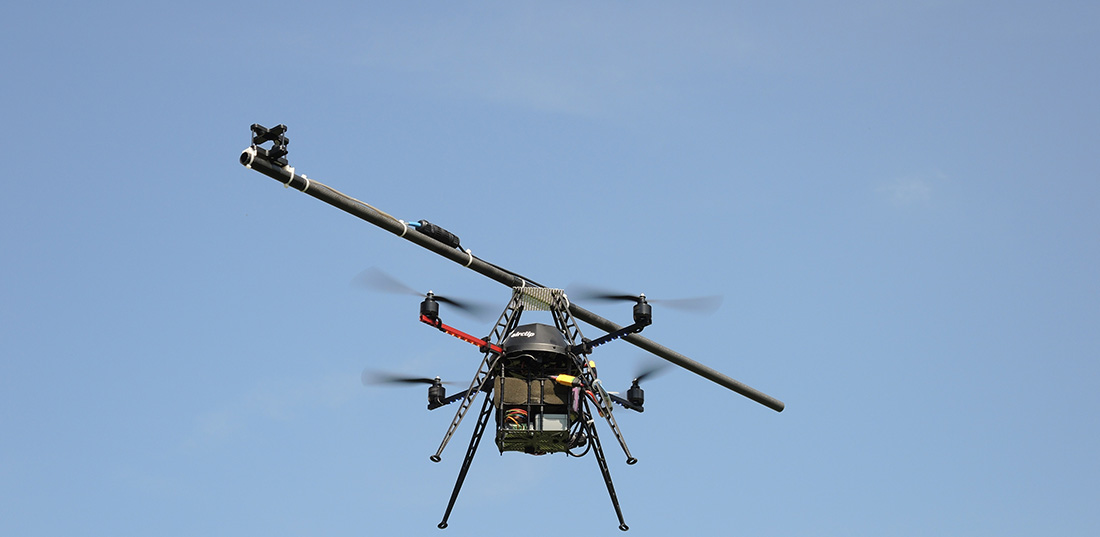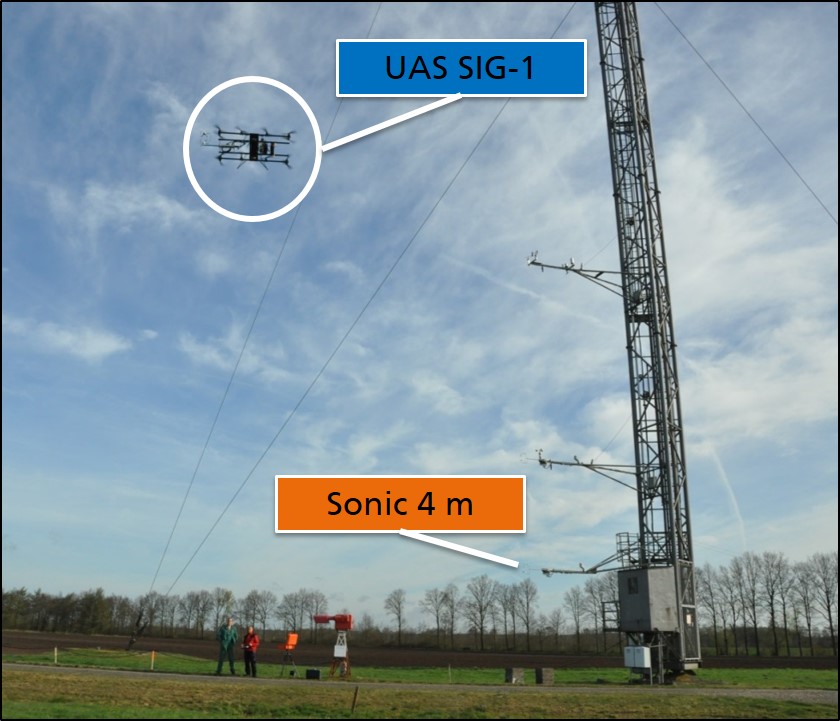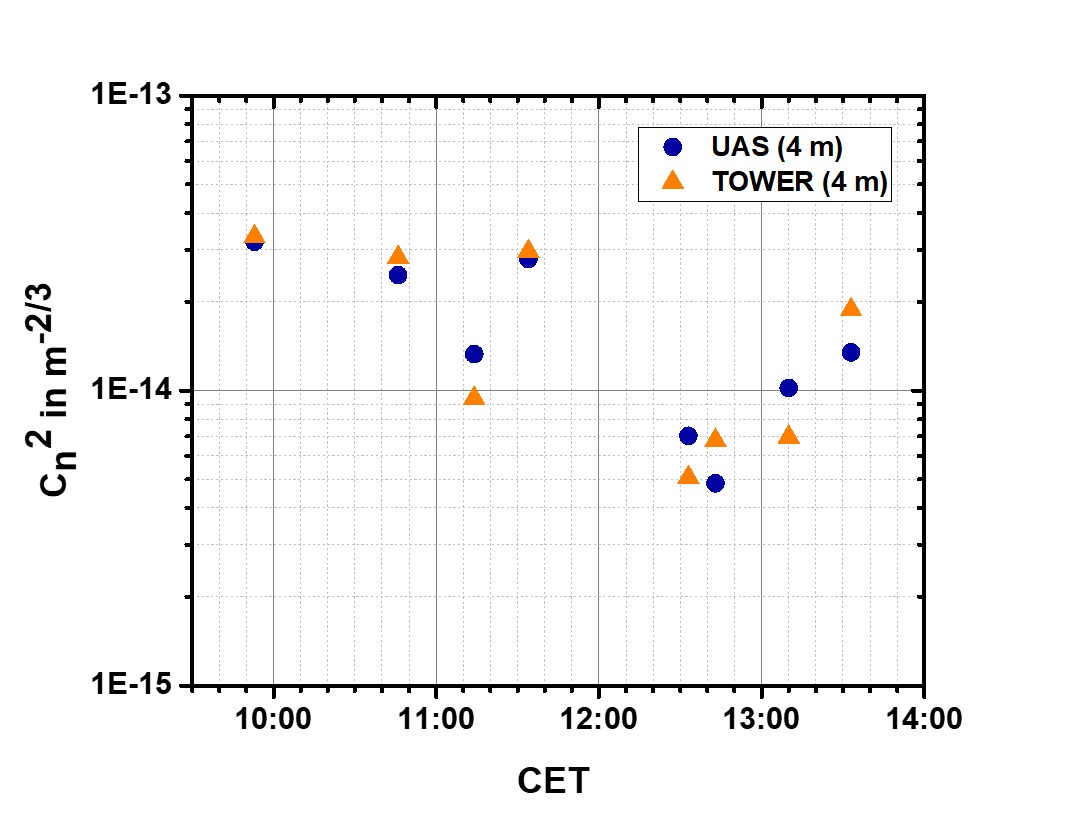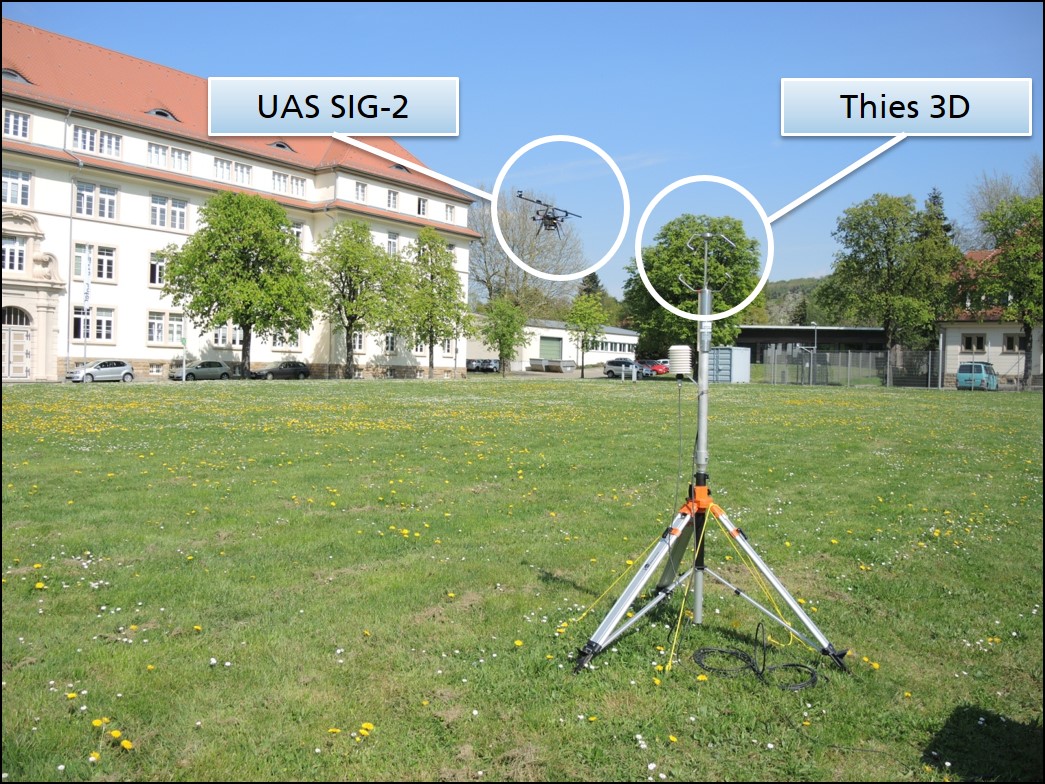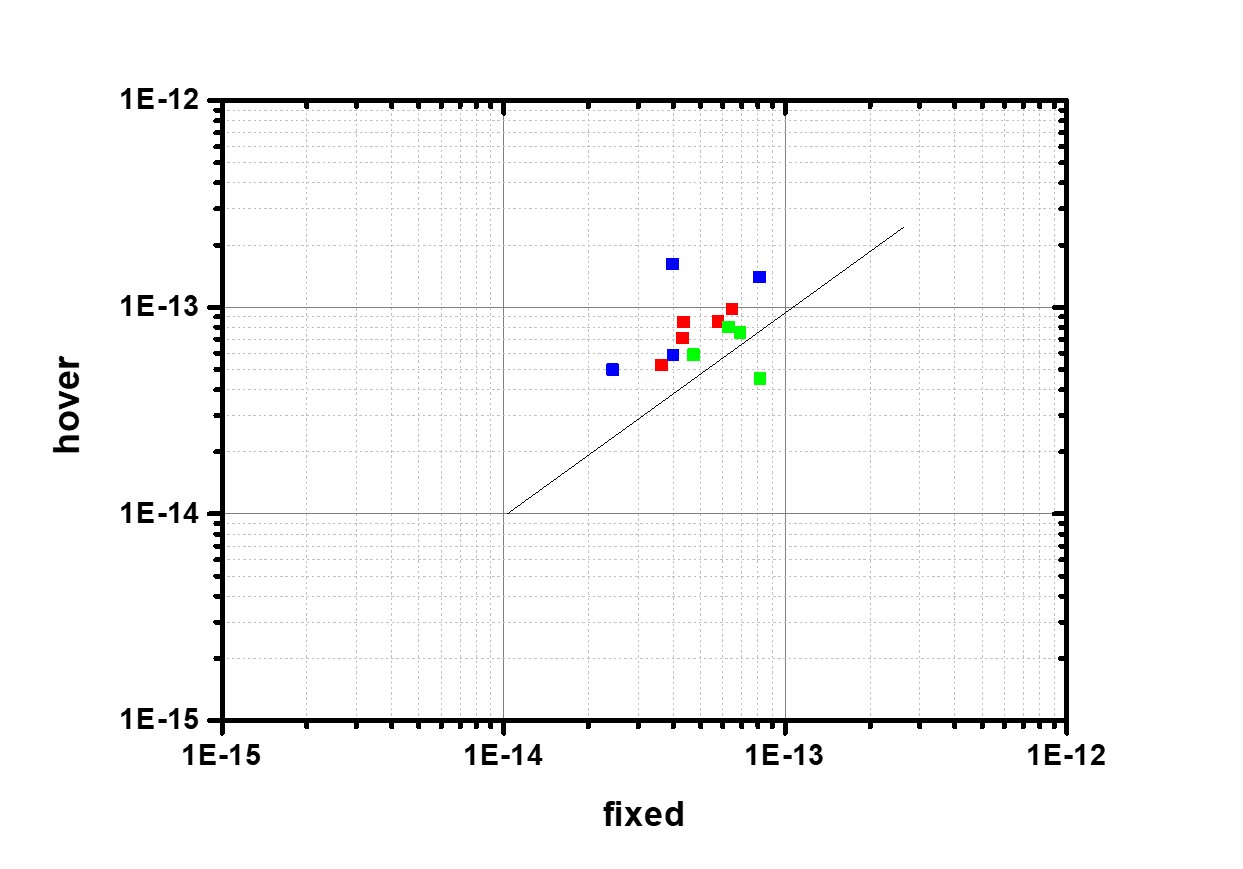Influence of turbulence
For the conception and use of electro-optical systems, the expected turbulence effects must be taken into account. One cause of the turbulence in the atmospheric boundary layer (up to 1-2 km height) is the temperature difference between the ground and the air layer above. During the day, warmer air bubbles detach from the ground, rise upwards and cause turbulent mixing.
The turbulence intensity is strongly influenced by the weather, i.e. solar radiation, temperature fluctuations and wind force. It varies with the time of day and season in the prevailing climate. The turbulence strength is described by the structural parameter of the refractive index fluctuation Cn2.
Since the turbulence intensity decreases with increasing height above the ground, knowledge of the height profile of Cn2 is also necessary for non-horizontal propagation distances. In order to determine the elevation profile of Cn2, the elevation profiles of the following meteorological quantities at different altitudes (h) must be known: air temperature T (h), air pressure p (h) and structural parameters of temperature fluctuation CT2 (h).
Motivation
- set up a flexible System
- easy measurements over area of interest
- easy measurements of vertical and horizontal profiles
Challenge
- turbulence limits optical sensor performance
- optical turbulence is depending on height, surface, climate
- need for over-water measurements
- fixed measurements with towers are not flexible
- regulation and permission procedure working with UAS
- battery capacity and weight limits flight time
 Fraunhofer Institute of Optronics, System Technologies and Image Exploitation IOSB
Fraunhofer Institute of Optronics, System Technologies and Image Exploitation IOSB 